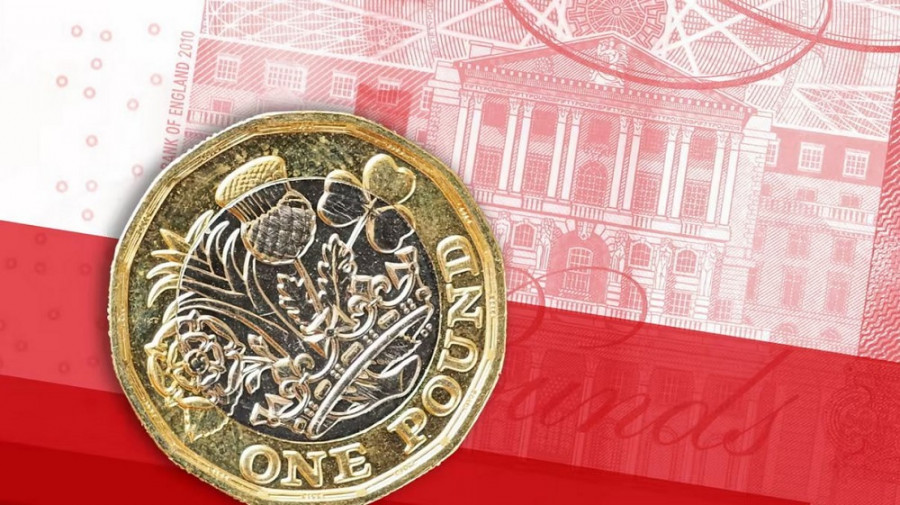The GBP/USD pair slumped, setting new local lows. At some point, the bears have pushed the price below the 1.2650 support level (the middle line of the Bollinger Bands indicator, coinciding with the Kijun-sen line on the daily timeframe) and are confidently heading towards the 26-figure mark. The greenback is the driving force behind the decline, which has strengthened significantly across the market at the start of the Tuesday session. The US Dollar Index has reached its highest level in almost two weeks, reflecting increased trader interest in the US currency.
However, the decline is not solely due to the greenback's strength – the British pound is also contributing to this process. Traders were disappointed by the latest UK economic reports. While these are secondary data, they still had an impact on the pair's dynamics. Overall, this is another piece of the puzzle that does not work in favor of the pound. In other words, the reports contributed to the weak inflation report published in December.

To recap, on an annual basis, the Consumer Prices Index has sharply decreased to 3.9%, compared to an anticipated drop to 4.3%. This is the slowest rate of growth since September 2021. The core CPI has also declined quite sharply, reaching 5.1% year-on-year (the slowest pace of growth since January 2022), while most experts were expecting a decrease to 5.6%. This marks the fourth consecutive month of decline. The Retail Price Index, which employers use during wage contract negotiations, has fallen to 5.3% year-on-year (compared to a forecast of 5.6%). This is another record low; the last time it was at this level was in September 2021. The Producer Price Index remains in negative territory at -2.6% year-on-year, marking the sixth consecutive month in negative territory. The Producer Price Index also dipped below zero at -0.2% year-on-year in November.
As we can see, inflation has hit the brakes, allowing the bears not to worry about a rate hike by the Bank of England. Clearly, these results do not support a hawkish stance. On the contrary, the market has started to talk about a potential interest rate cut, but there has been some delay in this regard, which led the bulls to test the 28-figure level. The BoE was not prepared to soften its rhetoric, essentially agreeing to maintain the status quo in the coming months. Given that the Federal Reserve essentially announced a reversal of quantitative easing policies at its December meeting, the divergence in central bank positions widened. This led to a surge in the pair last week to the 1.2826 level.
However, judging by today's price dynamics, the market has started to doubt that the BoE will continue to maintain a moderately hawkish stance. Two of the aforementioned reports contributed to such doubts. Firstly, the Price Index from the British Retail Consortium (BRC) was disappointing. It came in at the November level (4.2%), the lowest reading since June 2022. Downward momentum has persisted for six months. The report's structure suggests that inflation in food prices has sharply declined to 6.7% (compared to 7.8% in the previous month).
Another economic report also proved to be a disappointment. The UK Manufacturing PMI entered the "red," reflecting negative trends in this sector. The index dropped to 46.2 points in December. It's worth noting that the index has consistently remained below the 50-point mark, indicating contraction, since August 2022. Commenting on this report, S&P Global economists noted that the number of new orders continues to decline, as conditions remain tough "both in the domestic market and on key export markets."
Thus, the GBP/USD pair is falling not only due to the corrective rise in the US dollar index but also due to the British currency's weakness. The key issue is the slowdown in inflation. The aforementioned reports have only added to the overall negative picture, playing a supporting role. It's also important to remember the Non-Farm Payrolls report scheduled for Friday – the dollar could come under pressure from this release, especially since forecasts don't bode well for the greenback (higher unemployment, weak job growth, lower wage growth). Therefore, it may be prudent to close short positions on the pair closer to Friday, regardless of the strength of the bearish momentum.
The nearest target for the downtrend in the medium term is the 1.2580 level (which is the Kijun-sen line on the weekly chart). The primary target is 1.2500 (the lower Bollinger Bands line on the daily chart).
The material has been provided by InstaForex Company - www.instaforex.comfrom Forex analysis review https://ift.tt/mTG8saL
via IFTTT
